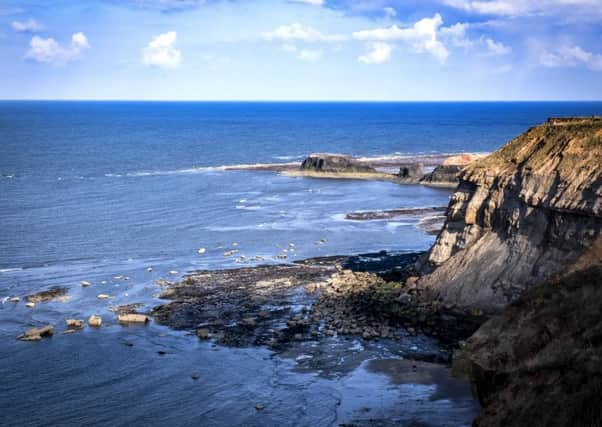How Creteblock vessel met its fate as Whitby shipwreck


Behind each of them is a maritime tale from a time gone by - and the wreck of the Creteblock vessel, between Whitby and Saltwick Bay, is no exception.
It is revealed, in its full glory, at low tide to both those walking the sands or making their way along the Cleveland Way Trail on the cliffs above.
Advertisement
Hide AdAdvertisement
Hide AdThe wreck, visible here in the bottom left against the backdrop of Saltwick Nab, dates to 1947.
But the craft itself was constructed decades earlier, as part of a shipbuilding programme initiated during the First World War.
According to a journal of the Sussex Industrial Archaeology Society, the boat, made from concrete, was completed at Shoreham in Sussex in 1920, its engine supplied by Newton Bean and Mitchell of Bradford.
The journal, the 2005 edition of Sussex Industrial History, details the vessel as later being part of The Crete Shipping Co, which used its fleet of tugs and barges to export coal from the North East of the country “to the south coast, the near continent, the Baltic and very occasionally to the Iberian peninsula and the Mediterranean”.
Advertisement
Hide AdAdvertisement
Hide AdOther accounts suggest it was used as a harbour tug by Smiths Dock in Teeside.
Circa 1934, the boat was taken to Whitby for scrap, where it sat derelict until 1947.
A decision was then taken to deliberately sink the vessel - a process known as scuttling.
But it did not meet its fate out at sea as planned, instead coming to its final resting place much closer to shore.
Advertisement
Hide AdAdvertisement
Hide AdWhilst being towed, it is said to have run aground, striking Whitby Scar in shallow water.
Then a hazard there to other boats, it was blown up - though large pieces of concrete debris still remain.
Over time, of course, they have felt the effects of the tide, becoming more weathered.
But the shipwreck, today encrusted with limpets and barnacles, is one of the more prominent along Whitby’s coastline.
Technical details: 1/125 sec, f/18, ISO 400 taken on a Fuji X-T3 camera at 50mm.